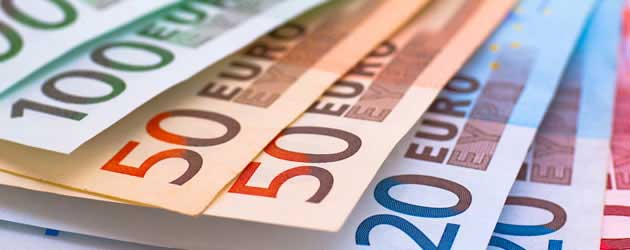 The Pound to US Dollar exchange rate (GBP/USD) grew by around 0.45 cents to 1.5235 yesterday as the US ISM Manufacturing index failed to meet analysts’ projections of 54.0. The headline manufacturing indicator slowed from 54.2 in February to just 51.3 in March. 50.0 is the level that separates contraction from growth.
The Pound to US Dollar exchange rate (GBP/USD) grew by around 0.45 cents to 1.5235 yesterday as the US ISM Manufacturing index failed to meet analysts’ projections of 54.0. The headline manufacturing indicator slowed from 54.2 in February to just 51.3 in March. 50.0 is the level that separates contraction from growth.
Although the figure showed a further expansion of the manufacturing industry in March it pointed towards a slowdown in momentum, which could in turn lead to reduced GDP output as businesses hold back on investment following the ‘sequester’ of spending cuts. Indeed, the New Orders component of the report was one of the worst hit, falling from 57.8 to 51.4.
Usually soft domestic data in the US is interpreted by traders as bullish for the US Dollar because it reduces risk sentiment and therefore increases the amount of safe haven flows. As the world’s premier reserve currency, the US Dollar is often the primary beneficiary of such flights to safety. However, under the current economic climate of Central Bank intervention, the tables have turned and weak data in the United States is actually viewed as negative for the US Dollar.
This is because the Federal Reserve have pledged to continue flooding the market with $85 billion per month until Unemployment falls to 6.5% or Consumer Price Index exceeds 2.5%. Therefore soft US economic data is now seen to delay an end to the Fed’s expansive QE3 programme. Asset purchases increase the money supply and drive inflation higher, which has the subsequent consequence of devaluing the value of the ‘Buck’.
However, the underwhelming Manufacturing report did give the Pound a boost against the commodity-correlated currencies as global growth prospects took a turn for the worse. Sterling grew by around 0.4 cents against the Canadian Dollar (GBP/CAD), 0.2 cents against the Australian Dollar (GBP/AUD), and 0.2 cents against the New Zealand Dollar (GBP/NZD).
Risk sentiment spiked slightly last week as Cypriot banks opened to a mood of calm – largely due to the strict capital control laws that restricted the amount of money that could be withdrawn to €300 a day. Nevertheless, the threat of mass exoduses at a later date, when the ‘temporary’ measures are relaxed, has not escaped traders’ minds and the riskier currencies are performing understandably cautiously.
This morning’s data should see the Pound press ahead against the downtrodden Euro as UK Manufacturing Output is predicted to have inched higher from 47.9 to 48.8 in March, and the Unemployment Rate in the 17-nation bloc is projected to reach a fresh all-time record high of 12.0%.
The Pound to Euro exchange rate (GBP/EUR) is currently trading close to a 2-month high of 1.1888, around 4 cents better off than because the Cyprus bailout programme was announced. Further Sterling gains are possible if the European unemployment crisis pushes the European Central Bank towards looser monetary policy. Mario Draghi’s policy statement on Thursday will give a good indication of the ECB’s stance on a potential interest rate cut below the current record low 0.75%.

Comments are closed.